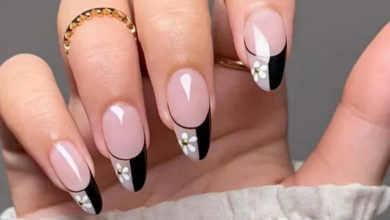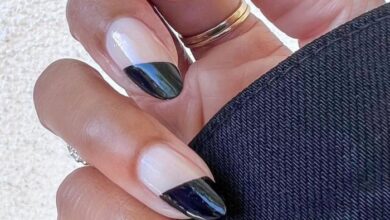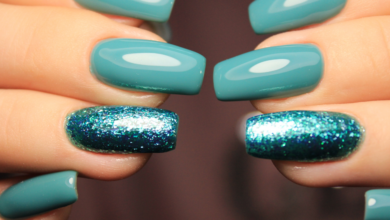
Looking to add a touch of glamour to your nails? Look no further than “All About Acrylics: Dive Deep with Stylish.ae’s Guide to Acrylic Nails.” This comprehensive guide will take you on a journey through everything you need to know about acrylic nails, from application techniques to maintenance tips. Whether you’re a seasoned acrylic nail aficionado or just starting out, this guide is your ultimate companion for achieving stunning, long-lasting nail enhancements. Say hello to flawless, stylish nails with the help of Stylish.ae’s expertise!
What are Acrylic Nails?
Acrylic nails are a popular type of artificial nails that are created by applying a combination of liquid monomer and powder polymer on top of your natural nails. This mixture forms a durable and hard layer that can be shaped and customized according to your desired nail length and design. Acrylic nails are known for their strength and versatility, making them a great option for anyone looking to enhance the appearance of their natural nails.

Definition of Acrylic Nails
Acrylic nails refer to the process of enhancing your natural nails with the application of a mixture of liquid monomer and powder polymer. This mixture hardens when exposed to air, creating a strong and durable layer on top of your natural nails. Acrylic nails can be extended and shaped as desired, allowing for endless possibilities when it comes to nail designs and lengths.
Composition of Acrylic Nails
Acrylic nails are made up of a liquid monomer, which is typically a combination of ethyl methacrylate (EMA) or methyl methacrylate (MMA), and a powder polymer, which is usually made of polymethyl methacrylate (PMMA). When these two components are mixed together, they create a chemical reaction that solidifies and forms the hard layer on top of your nails.
How Are Acrylic Nails Applied?
Applying acrylic nails involves several steps to ensure proper adhesion and a long-lasting result. These steps include preparing the natural nails, applying nail tips, and then using the acrylic mixture to create a hard protective layer.
Preparation of Natural Nails
Before applying acrylic nails, it is important to prepare your natural nails properly. This includes removing any old polish, shaping the nails, and pushing back the cuticles. It is also recommended to lightly buff the surface of the nails to create a rough texture, which helps the acrylic adhere better.
Application of Acrylic Nail Tips
If you want to extend the length of your nails, acrylic nail tips can be applied before the acrylic mixture. These tips come in various sizes and shapes, allowing you to customize the length and style of your nails. The tips are adhered to the natural nail using a nail adhesive specifically designed for this purpose.
Applying Acrylic Mixture
Once the nail tips are in place (if desired), the acrylic mixture is prepared by combining the liquid monomer and powder polymer. The mixture is applied to the base of the nail near the cuticle and then brushed towards the tip, shaping and sculpting the nail as desired. The acrylic mixture dries quickly, forming a hard and durable layer that protects and enhances your natural nails.
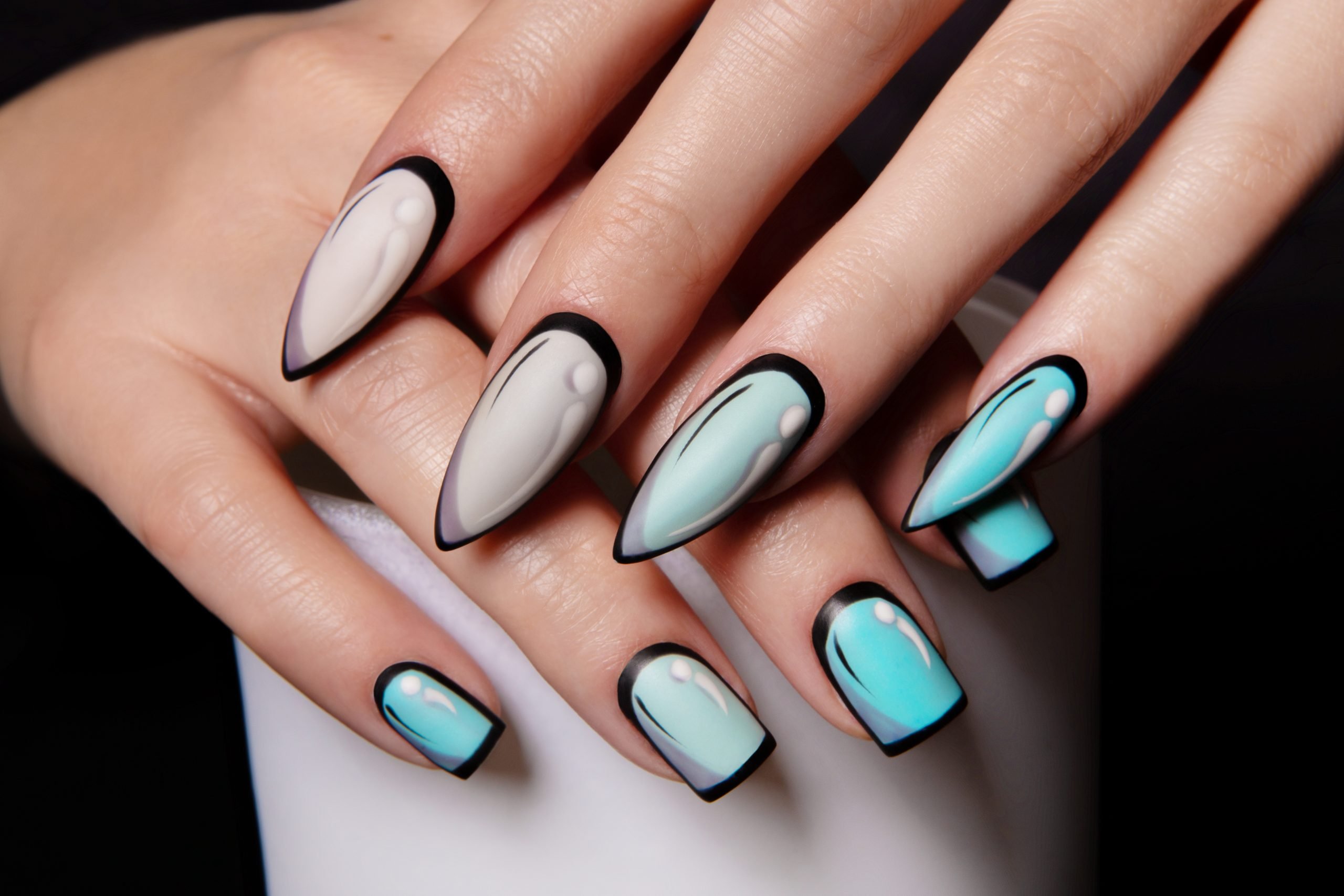
Benefits of Acrylic Nails
Acrylic nails offer several benefits that make them a popular choice among individuals looking to enhance the appearance of their nails.
Durability
One of the main benefits of acrylic nails is their durability. The combination of liquid monomer and powder polymer creates a strong and sturdy layer on top of your natural nails. This means that acrylic nails are less prone to breakage, making them a long-lasting option for those who want to keep their nails looking fabulous for an extended period of time.
Versatility in Nail Designs
Acrylic nails are highly versatile when it comes to nail designs. The hard nature of acrylic allows for intricate and detailed designs to be created on the nail surface. Whether you prefer a simple French tip design or a more elaborate nail art creation, acrylic nails can be shaped and customized to accommodate a wide range of design possibilities.
Maintenance
Acrylic nails require minimal maintenance to keep them looking their best. Unlike natural nails, which can chip or break easily, acrylic nails are more resistant to everyday wear and tear. However, it is important to still practice proper nail care, such as regularly moisturizing the cuticles and using a protective top coat to maintain the finish of the acrylic nails.
Strength
Acrylic nails are known for their strength. The layer created by the acrylic mixture provides a protective barrier for your natural nails, reducing the risk of breakage or damage. This makes acrylic nails a great option for individuals with weak or brittle nails who are looking to strengthen and enhance their nail appearance.
Different Types of Acrylic Nails
There are several different types of acrylic nails that you can choose from, depending on your personal preferences and desired nail style.
Traditional Acrylic Nails
Traditional acrylic nails refer to the classic method of applying acrylic mixture to the nails. These nails can be shaped and customized to your desired length and design. This type of acrylic nail is a popular choice for those who prefer a more natural and understated look.
Solar Nails
Solar nails are a type of acrylic nail that is created using a specialized powder. This powder contains a built-in pink or white pigment, eliminating the need for additional polish or color. Solar nails are known for their durability and long-lasting shine, making them a popular choice for those who want low-maintenance acrylic nails.
Pink and White Acrylic Nails
Pink and white acrylic nails, also known as “permanent French manicure,” are a classic and elegant option. These nails are created using a combination of pink acrylic powder and white acrylic powder. The pink powder is used to create the base color, while the white powder is used to create the French tip. This results in a clean and sophisticated look that can be worn for any occasion.
Gel Acrylic Nails
Gel acrylic nails combine the benefits of both gel nails and acrylic nails. This type of acrylic nail uses a gel-like substance that is applied to the natural nails and then cured under a UV light. The result is a glossy and long-lasting finish that resembles traditional gel nails. Gel acrylic nails are a popular choice for those who want the durability of acrylic nails with the added benefit of a gel-like appearance.
Colored Acrylic Nails
Colored acrylic nails offer endless possibilities for creativity and customization. This type of acrylic nail allows you to choose from a wide range of vibrant and bold colors to create a unique and eye-catching look. Colored acrylic nails can be worn alone or combined with other nail art techniques, such as glitter or designs, to create a personalized nail style.
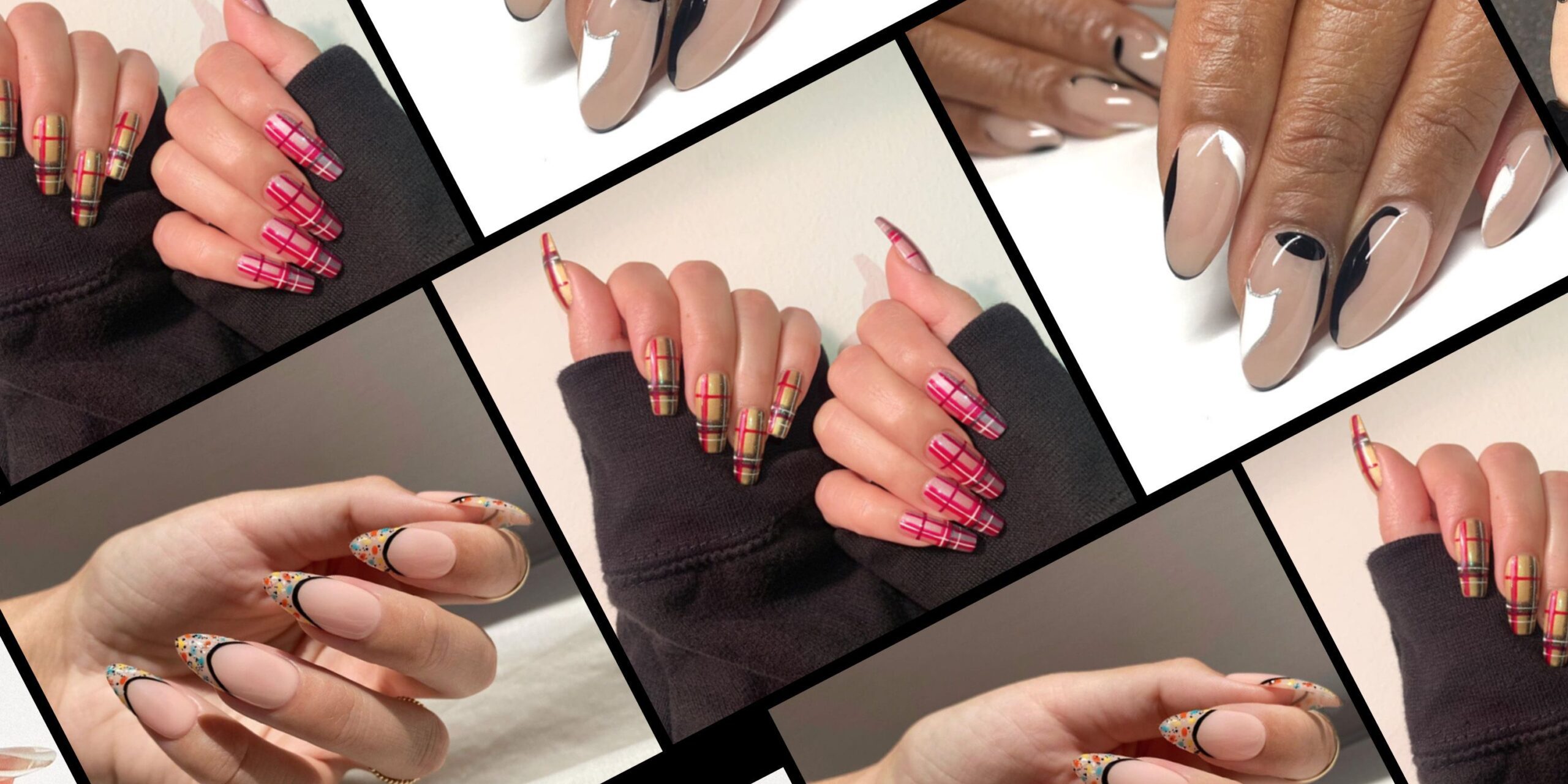
Acrylic Nails vs. Gel Nails
When it comes to artificial nails, acrylic nails and gel nails are two popular options. While both offer their own unique advantages, there are some key differences between the two.
Differences in Composition
The main difference between acrylic nails and gel nails lies in their composition. Acrylic nails are created by mixing a liquid monomer with a powder polymer, which creates a hard and durable layer when exposed to air. Gel nails, on the other hand, are made from a gel-like substance that is applied to the nails and then cured under a UV light.
Application Process
The application process for acrylic nails and gel nails also differs. Acrylic nails require the mixing of the liquid monomer and powder polymer, which can be more time-consuming and require more precision. Gel nails, on the other hand, are applied using a gel-like substance that is easier to work with and requires less time to cure.
Appearance
In terms of appearance, acrylic nails and gel nails also have slight differences. Acrylic nails tend to have a thicker and more robust appearance, while gel nails have a more natural and flexible look. Acrylic nails can also be shaped and customized more easily, allowing for a wider range of nail designs and lengths.
Durability and Maintenance
Both acrylic nails and gel nails offer durability, but acrylic nails are generally considered to be more durable and long-lasting. Acrylic nails are less prone to cracking or peeling, making them ideal for individuals with active lifestyles. Gel nails, on the other hand, may require more frequent maintenance, such as filling and replacing, to maintain their appearance.
Managing and Maintaining Acrylic Nails
Proper management and maintenance of acrylic nails are important to ensure their longevity and overall health.
Regular Filling and Refilling
To maintain the appearance of your acrylic nails, regular filling and refilling are necessary. As your natural nails grow, a gap forms between the acrylic and your cuticle. Filling this gap with additional acrylic ensures that your nails remain seamless and free from any lifting or peeling.
Proper Cleaning and Hygiene
Keeping your acrylic nails clean is essential for their maintenance and overall hygiene. Regularly clean your nails with mild soap and water, and gently dry them to avoid any moisture-related issues. Avoid using harsh chemicals or acetone-based products, as these can damage the acrylic and weaken your natural nails.
Avoiding Excessive Force
While acrylic nails are durable, it is important to avoid excessive force or pressure on your nails. This includes tasks such as using your nails as tools, forcefully opening containers, or biting your nails. Excessive force can cause the acrylic to weaken or break, putting your natural nails at risk of damage as well.
Dealing with Nail or Acrylic Damage
In the event of nail or acrylic damage, it is important to seek professional help to assess and repair the issue. Avoid attempting to fix the damage yourself, as this can potentially worsen the situation. A trained nail technician can provide guidance on repairing or replacing damaged nails to ensure the overall health and appearance of your acrylic nails.
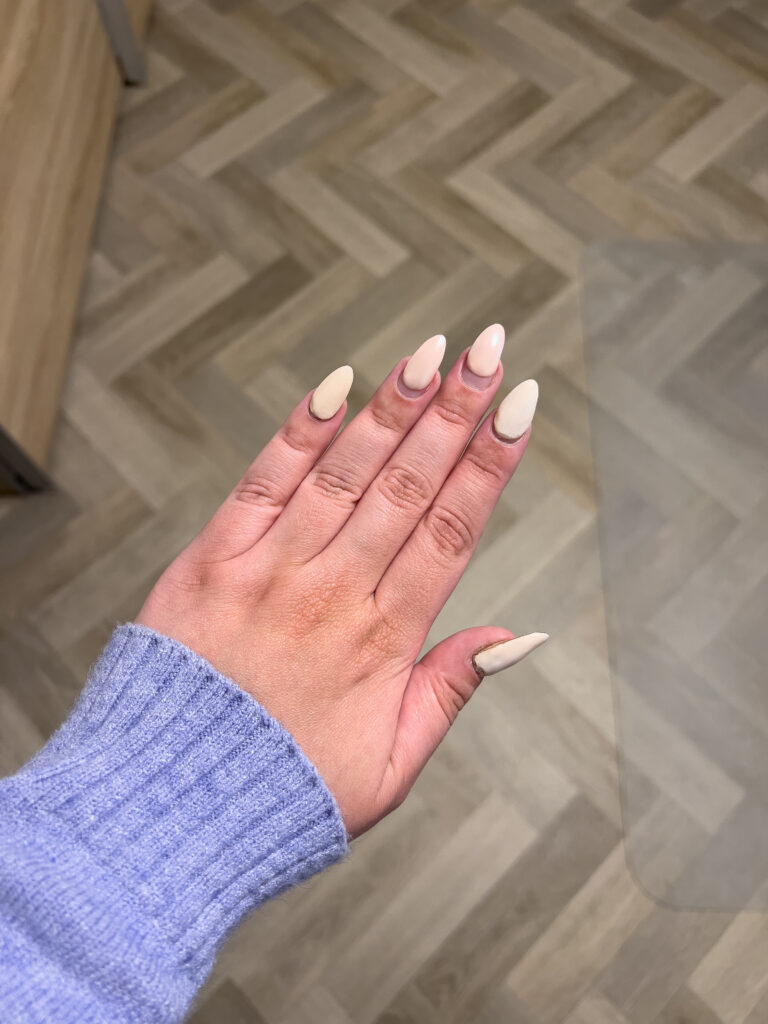
Potential Risks and Precautions
While acrylic nails offer many benefits, it is important to be aware of the potential risks and take necessary precautions to minimize them.
Allergic Reactions
Some individuals may have an allergic reaction to the ingredients used in acrylic nails, such as the liquid monomer or the powder polymer. Before getting acrylic nails, it is recommended to do a patch test to check for any allergic reactions. If you experience redness, itching, or swelling, consult a dermatologist and avoid using acrylic nails.
Nail Bed Damage
Improper application or removal of acrylic nails can lead to nail bed damage. It is important to go to a reputable salon and ensure that the nail technician is experienced in applying and removing acrylic nails properly. Avoid picking or forcefully removing acrylic nails on your own, as this can cause damage to your natural nails.
Risk of Infection
If moisture or bacteria gets trapped between the natural nail and the acrylic layer, it can lead to an infection. To minimize the risk of infection, make sure that your nails are properly cleaned and dried after washing. It is also important to use nail products and tools that are properly sanitized to prevent the spread of bacteria.
Chemical Sensitivities
Some individuals may have sensitivities or allergies to the chemicals used in acrylic nails, such as the liquid monomer or the powder polymer. If you have a history of chemical sensitivities, it is recommended to consult with a dermatologist or allergist before getting acrylic nails. They can provide guidance on suitable alternatives or precautions to take.
Tips for Choosing Acrylic Nail Salons
When choosing a salon for your acrylic nails, it is important to consider several factors to ensure a safe and satisfying experience.
Research and Recommendations
Start by researching different salons in your area and reading reviews or recommendations from previous customers. Look for salons that specialize in acrylic nails and have a good reputation for quality and hygiene.
Cleanliness and Sanitization
Visit the salon in person to assess their cleanliness and sanitization practices. Ensure that the salon follows proper hygiene protocols, such as regularly sanitizing their tools and stations. A clean and well-maintained salon is essential to minimize the risk of infections or complications.
Qualifications and Experience
Ask about the qualifications and experience of the nail technicians at the salon. Certified and experienced nail technicians are more likely to provide a high-quality and safe service. Don’t hesitate to ask for their certifications or portfolios to ensure that they have the necessary skills to meet your expectations.
Pricing and Services
Consider the pricing and services offered by the salon. While it is important to find a salon that fits your budget, prioritize the quality of service and hygiene over price alone. Compare the prices of different salons to get an idea of the average cost in your area and make an informed decision.
Reviews and Testimonials
Read online reviews and testimonials from previous customers to get a better understanding of the salon’s reputation and customer satisfaction. Pay attention to feedback regarding the salon’s ability to create and maintain acrylic nails, as well as their customer service.

Removing Acrylic Nails
When it comes to removing acrylic nails, there are two main options: professional removal or at-home removal. Both methods have their pros and cons, so choose the one that suits your preferences and situation.
Professional Removal
Professional removal is typically the safest and most effective method of removing acrylic nails. Nail technicians at a salon have the experience and proper tools to safely and efficiently remove the acrylic without causing damage to your natural nails. It is recommended to seek professional removal if you are unsure about the process or if you have particularly sensitive or weak nails.
At-Home Removal
If you prefer to remove your acrylic nails at home, it is important to proceed with caution and follow the proper steps. Start by soaking your nails in an acetone-based nail polish remover for about 20 minutes. Gently file the softened acrylic away, being careful not to apply excessive force. Finish by moisturizing your nails and cuticles to nourish them after the removal process.
Post-Removal Nail Care
After removing your acrylic nails, it is crucial to give your natural nails some time to recover and replenish. Keep your nails clean and moisturized, and avoid using any harsh chemicals or nail polish for a few days. Consider applying a strengthening nail treatment to promote nail health and prevent any potential damage caused by the acrylic removal process.
Popular Acrylic Nail Designs
Acrylic nails allow for a wide range of creative and stylish nail designs. Here are some popular designs that you can consider for your next acrylic nail appointment.
French Tips
The classic French tip design is a timeless choice that never goes out of style. This design features a natural or clear base with white polish applied to the tip of the nails. French tips can be customized with different shapes and lengths to suit your personal preference.
Ombre
Ombre nails have gained popularity in recent years and are a perfect choice for those who want a trendy and eye-catching look. This design involves blending two or more colors seamlessly, creating a gradient effect. The ombre technique can be applied using various color combinations, allowing you to create a unique and personalized nail design.
Stiletto
Stiletto nails are characterized by their long and pointed shape, resembling the pointed tip of a stiletto heel. This design is bold and edgy, making it a popular choice for those who want to make a statement with their nails. Stiletto nails can be customized with different colors, patterns, or embellishments to create a personalized and fierce look.
Coffin
Coffin nails, also known as ballerina nails, are a stylish and modern choice. This design features a square-shaped nail with the edges tapered to resemble a coffin or ballerina slipper. Coffin nails provide a sleek and elegant look, and they can be customized with various colors or nail art to match any occasion or mood.
Almond
Almond nails are a feminine and elegant choice that resembles the shape of an almond. This design features a narrow and tapered shape with a rounded tip. Almond nails can be worn in various lengths and customized with different colors or nail art to create a chic and sophisticated look.
In conclusion, acrylic nails offer a versatile and stylish option for anyone looking to enhance the appearance of their natural nails. With their durability, versatility in nail designs, and easy maintenance, acrylic nails are a great choice for those who want long-lasting and fabulous nails. However, it is important to consider the potential risks and take necessary precautions to ensure the health and safety of your natural nails. By choosing a reputable salon, properly maintaining your acrylic nails, and following proper removal processes, you can enjoy the beauty and benefits of acrylic nails with confidence.
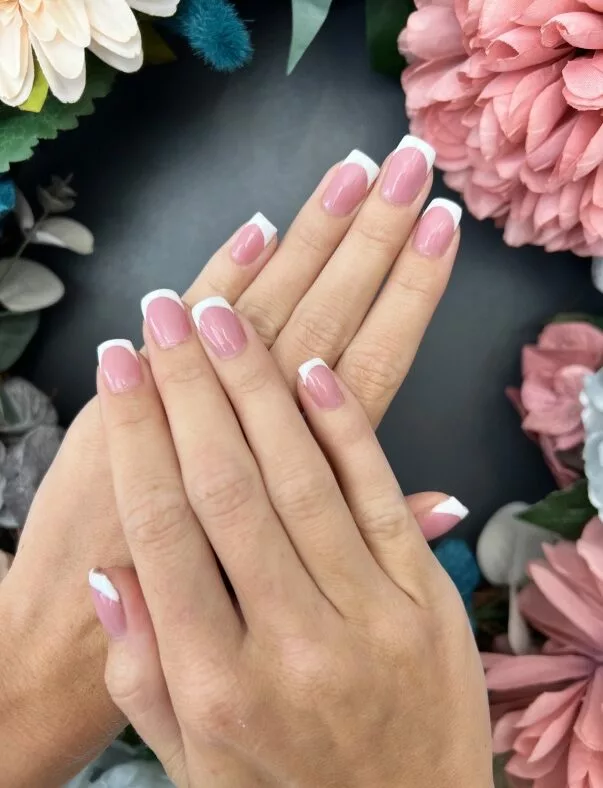
Kiss Salon Acrylic Nude French Nails Kan07C Review(Opens in a new browser tab)
29 Different Designs for Short Acrylic Nails(Opens in a new browser tab)

